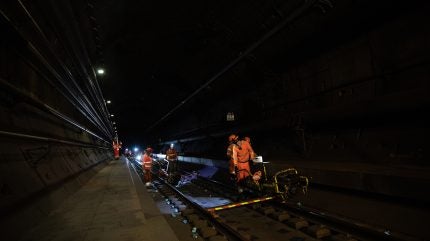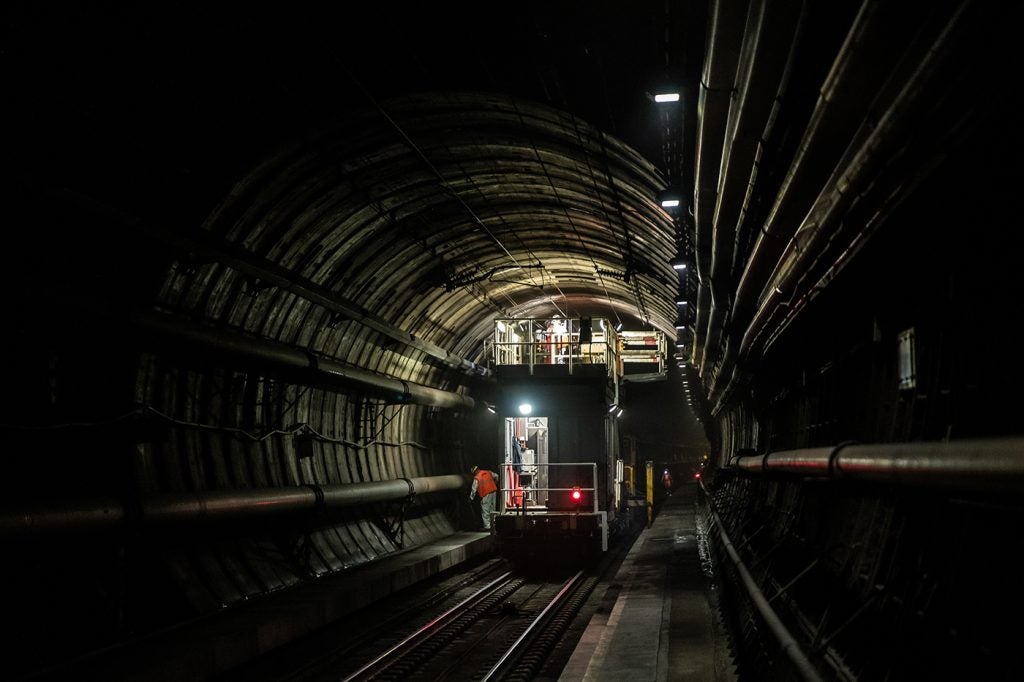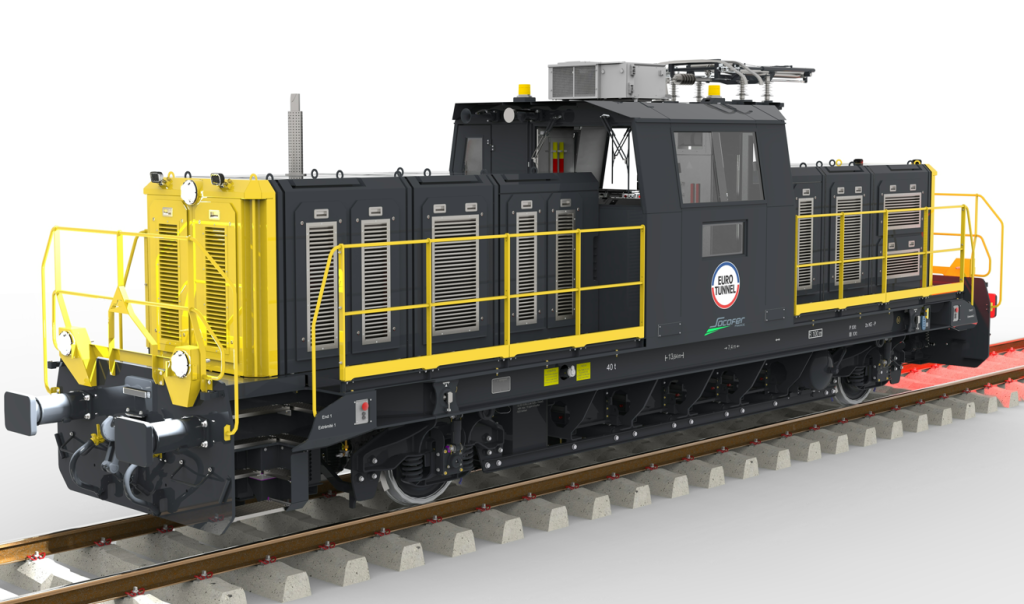
Though there are hundreds of new rail infrastructure projects each year in Europe, few have perhaps retained the public’s interest as much as the Channel Tunnel between the UK and France, which will celebrate thirty years of operation this year.
Despite being almost three decades old, the 50.45km tunnel is still the third longest rail tunnel in the world and the longest subsea rail tunnel, carrying an average of 20 million passengers a year across Le Shuttle, the rail operator owned by Eurotunnel’s parent company GetLink, and third-party operator Eurostar.
However, despite the tunnel’s success as a link between two of Europe’s largest economies, some have questioned why services using the tunnel to go beyond France and the Netherlands have failed to materialise, with Eurostar remaining the only external operator throughout its history.
In response, GetLink CEO Yann Leriche kicked off the company’s 30th anniversary celebrations last December by making a new push for other operators to pitch services to new destinations, highlighting work that the company has done to research the feasibility of services to cities including Cologne and Geneva.
Railway Technology spoke to Dan Hughes, one of many senior employees at the company to also be celebrating 30 years, during GetLink’s kickoff celebrations at the company’s facilities in Coquelles, France, about the history of the company, some of the challenges it has faced, and what the future holds for the vital rail link.
Noah Bovenizer: Can you give us some background on yourself and your history with GetLink?
Dan Hughes: I am director of infrastructure at GetLink and it will be my 30-year anniversary with this company in October. I’m a local to Folkstone [the location of the shuttle terminal in Britain] originally, so I remember Eurotunnel when it was just an open field and hills!
How well do you really know your competitors?
Access the most comprehensive Company Profiles on the market, powered by GlobalData. Save hours of research. Gain competitive edge.

Thank you!
Your download email will arrive shortly
Not ready to buy yet? Download a free sample
We are confident about the unique quality of our Company Profiles. However, we want you to make the most beneficial decision for your business, so we offer a free sample that you can download by submitting the below form
By GlobalData
I’ve seen it develop and I’ve been very fortunate to participate in its history. I started my career here, following college, as a crew member for a short period, which was a great experience and opportunity to be part of that initial excitement when it was all very new travelling through the tunnel.
Shortly after, I became a train driver, driving our freight and passenger shuttles, before moving into the infrastructure division as a works train driver. My career then developed within infrastructure, I became the works train group leader, then manager, and later took on the power supply and catenary for the infrastructure division, and for just over two years now, I’ve been the director of infrastructure.
NB: What has kept you with GetLink for so long?
DH: Firstly, I’m going to answer that with the people. It’s a fantastic team, and it’s very unique, what with the Anglo-French relationship – where else does that exist? You’re bringing two cultures together, taking the best of each, and making Eurotunnel.
On the other side, after 30 years I still, even in my role today, discover things that I never knew were there. So in terms of that feat of engineering that is the Eurotunnel, I’m still wowed by it today and I think I will continue to be wowed by it for however long my career lasts. I love what we do, I love the contribution we make to the economy as we’re an essential link, and especially during the Covid-19 period that really stood out.
The fact that we contribute to the economies of Europe and the economy of the UK brings a real sense of pride. What’s kept me here? There it is. Where else can I get that personal reward and achievement, in such a fantastic team?

NB: GetLink has outlined its plans to encourage more links through the Channel Tunnel and is already in talks with some operators, but why do you think it has taken so long to get another operator on the line?
DH: Going back to my very early years, I remember during the development of the Channel Tunnel seeing all the potential destinations and I think that has always remained the vision. But it’s not necessarily been easy in terms of standards, processes, and interaction with other organisations.
I think it has just been a challenge but, as we’ve now announced, that challenge is being very strongly addressed because the benefits of cross-continental rail travel are amazing on many levels, not just for the passengers with greater options and choices, but also for protecting the environment.
NB: Looking back over the last 30 years, what are some of the unique challenges that come with managing the Channel Tunnel and its infrastructure?
DH: I think in terms of unique challenges, it’s mainly the bespoke nature of our infrastructure. We can’t just go and buy components off the shelf. The common challenge faced across industries, not just the rail industry, is that we don’t have as many people going to university these days on engineering courses.
That means the number of skilled engineers, or even the number of engineering companies, has reduced, which presents us a challenge in terms of finding those skills needed to re-manufacture bespoke components. That is sometimes challenging, but we just adapt to it.
The common challenge is that we don’t have as many people going to university these days on engineering courses.
However, this also impacts us in terms of recruitment as we’re in the southeast corner of the country, we’ve got London blocking us, and then you have [employment opportunities at] HS2 and HS1. It’s not just our industry, but to find engineers with either the required skills or the hunger to want to be in the rail industry is something we’ve had to adapt to.
We have had success with the challenges of recruitment: We heavily invest in apprenticeships, which helps us to extract all sorts of knowledge from existing team members. We’ve got partnerships with universities in France and we’re also developing a relationship with UKRIN at the University of Birmingham in the UK. It’s supporting the industry but it’s also supporting society, as we’re encouraging people into engineering, into maintenance, and indeed all aspects of the business.
NB: What is the most interesting issue you’ve seen with infrastructure over the last 30 years at GetLink?
DH: Obviously, our infrastructure is 30 years old and if you go back 30 years there was nothing else to compare it to. There are thousands of infrastructure assets that we have, so after 30 years they certainly need renewing and upgrading with new technology. It’s like mobile phones, which 30 years ago were like [the size of] a briefcase and now are very small, and we experienced that with all of our equipment.
We’ve also got major projects. For example, we have a project with Siemens at the moment where we are completely replacing the tunnel fire detection system. That is a really good example of that new digital world, as it is quite an intense project. We also have similar projects upgrading areas such as the ventilation and cooling systems.

Also, in the works train locomotives department, there is an interesting project. On our works trains, we have small locomotives from the days of construction of the tunnel, which were narrow gauge for construction and then refurbished and converted to standard gauge, diesel locomotives. But they’re now very old, so we have invested in 19 new on-track machines.
This is a favourite project of mine because the actual design of those new locomotives has come from the team. These locos are battery-powered and they’re designed to operate through an entire works possession on battery. However, if we have an extended possession or something goes wrong, then they’ve got a diesel generator.
All of the features of that on-track machine ultimately originated from the engagement with our team, who have years of experience, and you’re getting a product that, from the design stage, was influenced by the team, and will be revolutionary for our teams. In terms of noise, reduced pollution, and better working conditions, it will be absolutely fantastic.
NB: Has it been difficult to install the digital technology you’ve highlighted into the Channel Tunnel’s infrastructure, or was it built to be future-proof?
DH: Well, we say future proof but what is the future? Even 30 years ago, we wouldn’t have protected the infrastructure as much in terms of AI, so not everything is easy. Obviously, we like a challenge, and digitalisation and AI is one of those challenges.
But there’s also the challenge of acceptance. If you’ve got longer serving team members who are not necessarily from that world, there’s that matter of convincing them. Once they get to engage with a product and they see the results that come from it, they’ll say “Wow, incredible”, but it’s the initial aspect of trying to understand how it all works.
We’re still at the very early stages of developing our AI applications.
Also, we’re still in the very early stages of developing our AI applications and collection of data within the infrastructure division. At the moment we collect data from the track and the catenary, and we do thermography of the catenary. We have AI that can alert us to particular areas of attention, and that is proving very, very valuable. Now, we’re able to intervene before an incident happens.
It’s quite incredible now that we’ve got sensors on trains that can monitor the ride quality of the train, which gives us data on track geometry and is almost instantaneous, as we have a GSM [digital cellular] network. We now have an application for railway products that will have a fleet management system on it monitoring the battery, as well as managing battery life across the fleet so that we maximise the usage of the locos. It’s an endless opportunity but it’s very, very exciting.
This article was originally published in our digital magazine, Future Rail. You can subscribe to the magazine for free by clicking here.







